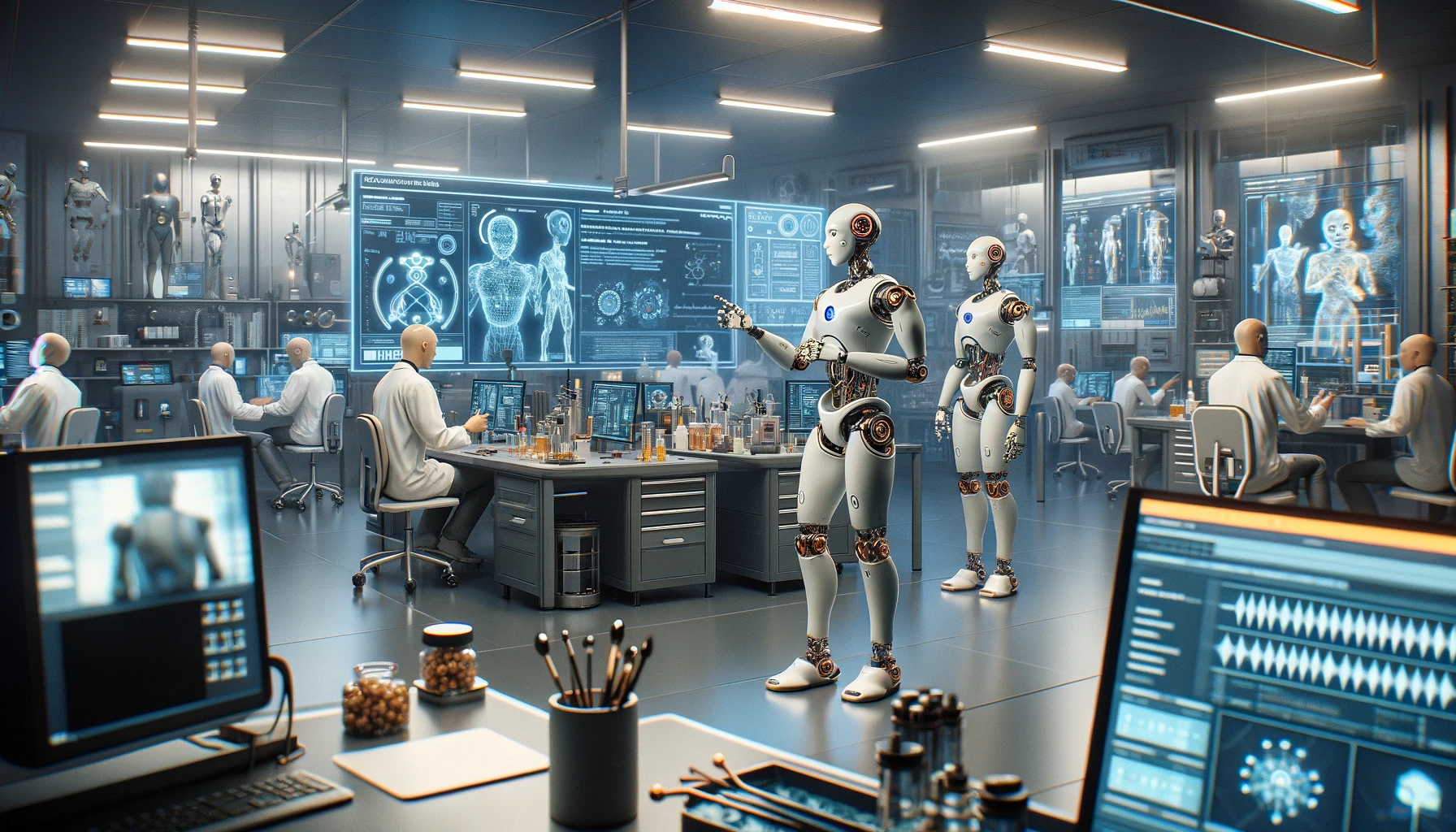
Artificial General Intelligence
In the evolving landscape of artificial intelligence, the scientific community is on the cusp of a transformative breakthrough: the development of Artificial General Intelligence (AGI). This ambitious endeavor seeks to create machines that can understand, learn, and apply knowledge across a wide range of tasks, matching or even surpassing human cognitive abilities. A key precursor to achieving AGI is the integration of speech-to-video and video-to-speech technologies with robotics, enhanced by the capacity for environmental interaction and the detection of such interactions to produce appropriate actions. This comprehensive approach not only enables robots to interpret and generate human-like communication but also facilitates their understanding of the physical laws governing the real world, thereby laying the groundwork for independent learning, improvement, and the emergence of skills and behaviors beyond human comprehension.
At the heart of this integrated approach is the synthesis of speech-to-video and video-to-speech technologies. Speech-to-video technology allows machines to convert verbal commands into visual representations, bridging the gap between auditory communication and visual comprehension. Conversely, video-to-speech technology translates visual inputs into verbal outputs, enabling machines to describe and interpret visual data through language. This bidirectional communication capability is essential for creating machines that can engage in human-like interactions, understand complex instructions, and provide informative feedback, thereby enhancing their ability to learn from and adapt to their surroundings.
Robotic interaction with the environment plays a pivotal role in this integrated framework. Equipped with advanced sensors and actuators, robots can manipulate objects, navigate their surroundings, and experiment with different actions to learn from the consequences of these interactions. This hands-on engagement with the physical world is crucial for understanding fundamental principles such as gravity, motion, and energy. By experimenting with and observing the outcomes of their actions, robots can glean insights into the laws of physics, enabling them to predict future events, plan their actions accordingly, and solve problems in ways that align with real-world dynamics.
The capability for environmental detection and response further augments this learning process. Sophisticated sensors and artificial intelligence algorithms enable robots to perceive changes in their environment and adjust their actions in real time. This responsiveness is critical for the development of adaptive learning and problem-solving skills. As robots analyze the effects of their interactions with the world, they refine their algorithms based on empirical evidence, thereby enhancing their understanding of cause and effect and improving their decision-making capabilities.
The culmination of these technologies and capabilities heralds a new era in the quest for AGI. Independent learning and self-improvement emerge as fundamental characteristics of this advanced form of artificial intelligence. Through continuous interaction with the environment and processing of speech and video information, robots can learn autonomously, acquiring new skills and adapting to unforeseen challenges without human intervention. This open-ended learning paradigm allows for the evolution of emergent skills and behaviors, which can arise from the complex interplay between the robot’s internal algorithms and its external interactions. Such emergent phenomena may lead to novel problem-solving approaches and insights that defy human understanding, signaling a leap toward machines that not only replicate but also transcend human cognitive abilities.
In conclusion, the scientific pursuit of AGI is marked by the integration of speech-to-video and video-to-speech technologies with advanced robotics and the capability for dynamic environmental interaction. This holistic approach fosters a deep understanding of the physical world, facilitates independent learning, and paves the way for the emergence of skills and behaviors that could redefine our understanding of intelligence. As we stand on the brink of this technological frontier, the potential for machines to learn, adapt, and evolve in ways that surpass human comprehension offers both unprecedented opportunities and challenges for the future of artificial intelligence.



